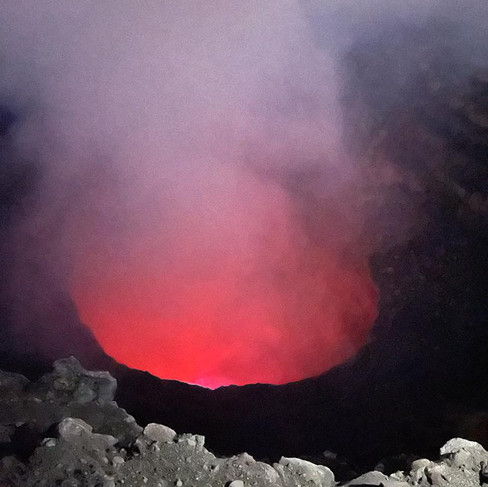Day 422 - The Masaya Volcano, Journey into the Inferno: Witnessing An Active Volcano with Boiling Lava
- Suhashini L
- Feb 27, 2024
- 2 min read
Updated: Mar 6, 2024
Day 422 (27 Feb 2024) - Las Penitas, Leon, Nicaragua to Managua, Nicaragua

DAY 422 (27 FEB 2024) – In the morning, I left La Penitas for a 4-hour (114 km) ride to Managua, the capital city of Nicaragua.
I arrived at my hostel by noon had my lunch at the nearby “Metrocentro” shopping mall. It was quite surprising that a fully occupied mall had no air-conditioning - or maybe it was just not functioning today!
At about 5 pm in the evening, I hopped on a taxi to visit the Masaya Volcano National Park, about 20 kilometers from Managua. It is home to 2 volcanoes, 5 craters, hiking trails, a museum and the magnificent Santiago Crater lava lake.
Declared in 1979, Masaya is Nicaragua’s first and largest national park, and is one of 78 protected areas of Nicaragua. I taxi fare came to USD 35 (RM 167) for a two-way journey while the entrance fee into the park was USD 10 (RM 47.65). There were expansive lava fields within the park – all of which were formed from volcanic eruptions in the 17th and 18th century.
I visited the museum within the park and learnt about the history of the volcano. There were amazing exhibitions and informative displays, including information about the “Ring of Fire”, which is a global chain of volcanoes. I also had the chance to touch a real lava rock.

I waited till sunset to get a spectacular view of the crater and its boiling lava! The smell of sulphur was very strong, and since it is toxic, we were only allowed a viewing time of 15 minutes on the deck near the crater.
It was a rare experience to have the chance to see the glowing red of the lava, and I’m glad I didn’t miss it!
The Masaya Volcano is a caldera (volcanic crater) located within the area of Masaya and is one of the only places in the world with an active lava lake, with boiling lava in its crater. Thought to be around 9000 years old. It is one of the most active volcanoes in the country, having erupted at least 19 times – 2008 being the most recent.
Referred to as “The Mouth of Hell” by the Spanish colonisers, they placed a wooden cross near the top of the crater. The Santiago Crater lava lake continually emits large amounts of sulfur dioxide gas, which look like huge clouds obscuring the volcanoes.
MY NICARAGUA JOURNEY MAP
POLARSTEPS | GOOGLE MY MAPS (below) |
(Click + to zoom or [ ] to expand for full info)
INSTA 360 CAMERA RIDING VIDEOS
COMING SOON.

































Comments